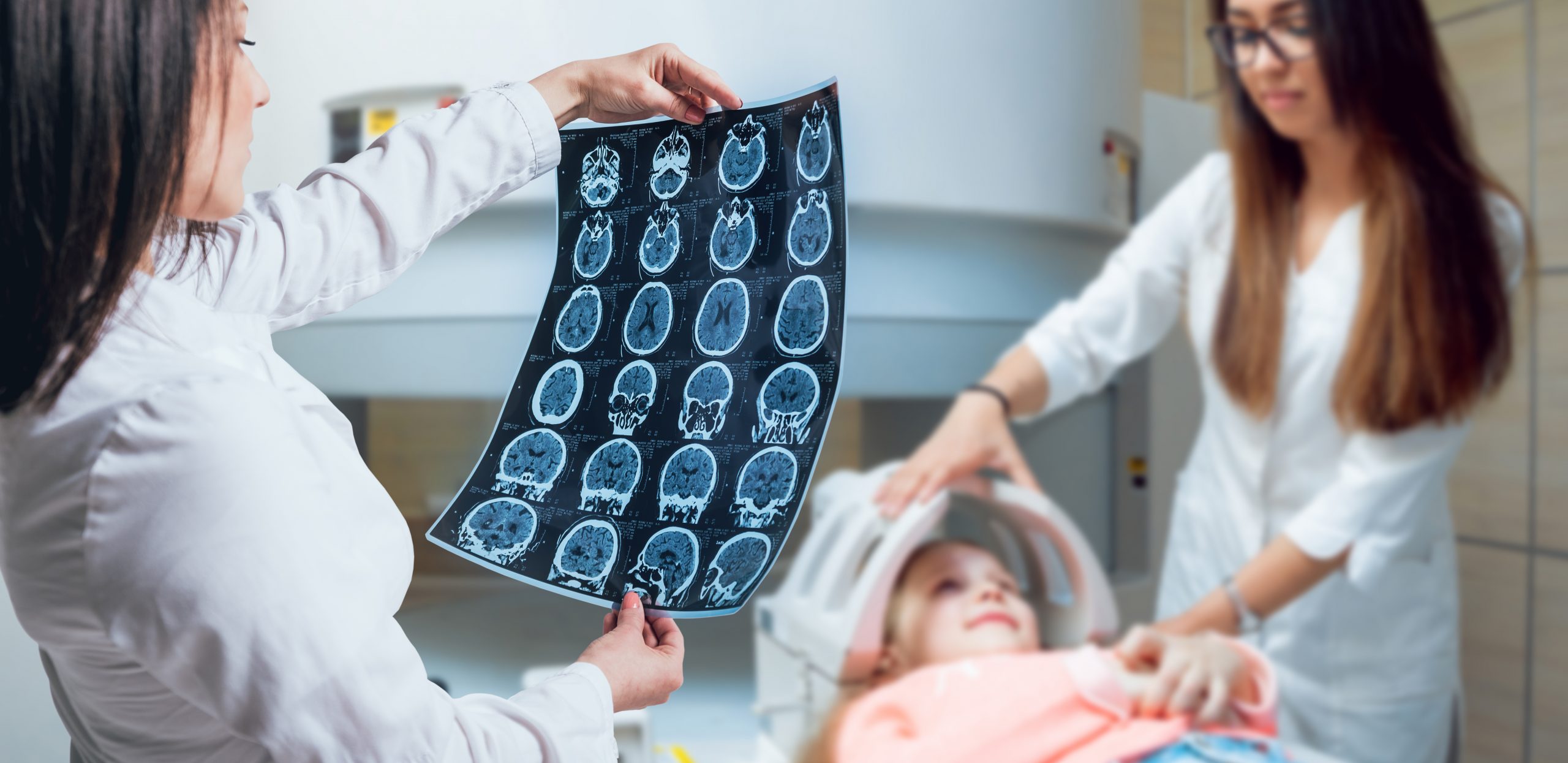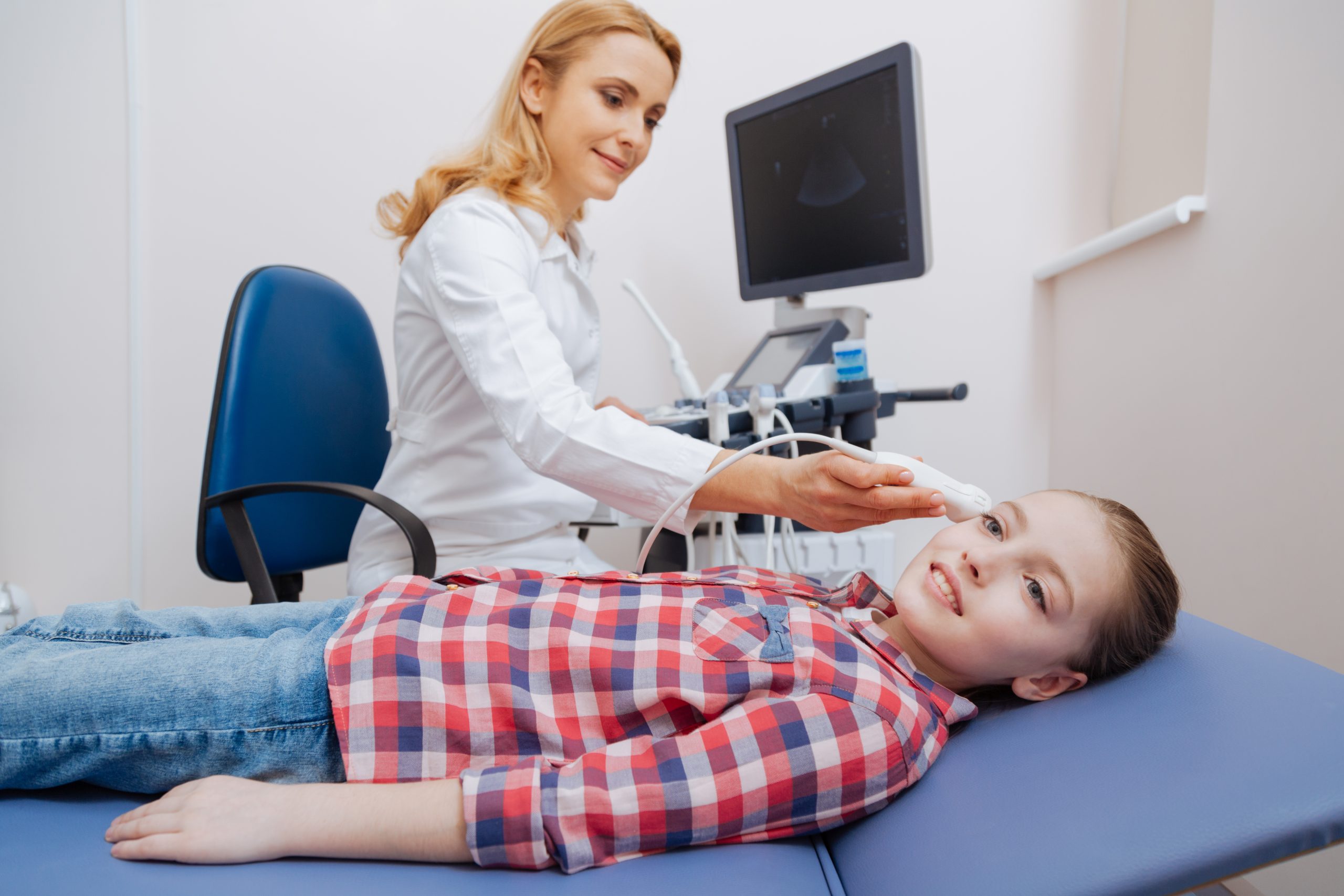Perinatal and Childhood Stroke:
Information and Resources
Stroke is not a medical condition that only affects the elderly. Stroke can occur in newborns, infants, children, and young adults. Stroke can also occur before birth. A stroke that occurs before birth may also be called fetal stroke, prenatal stroke, or in utero stroke. After birth until about one month of age, a stroke is referred to as neonatal stroke or newborn stroke. Childhood stroke refers to stroke occurring in children older than 1 month of age. Unfortunately, stroke is one of the top ten causes of death in children under age 18.
The risk of stroke is increased in the perinatal stage. This refers to the few weeks before and after birth. Perinatal stroke is estimated to occur in 1 of every 2800 live births.

Sixty percent of infants are symptomatic and benefit from early detection and treatment. But the remaining forty percent of such infants present with no obvious initial symptoms. The stroke is only discovered when there are delays in development in motor and learning skills. Sometimes, it is discovered with the onset of seizures.
In most cases, no underlying reason(s) for such strokes can be identified. Strokes are some of the common underlying causes of:
- Hemiplegia: complete paralysis of one side of the body
- Hemiparesis: slight paralysis or weakness of one side of the body
- Hemiplegic cerebral palsy: a type of cerebral palsy. It arises from damage to the part of the brain that controls muscle movement
Sixty percent of infants are symptomatic and benefit from early detection and treatment. But the remaining forty percent of such infants present with no obvious initial symptoms. The stroke is only discovered when there are delays in development in motor and learning skills. Sometimes, it is discovered with the onset of seizures.
In most cases, no underlying reason(s) for such strokes can be identified. Strokes are some of the common underlying causes of:
- Hemiplegia: complete paralysis of one side of the body
- Hemiparesis: slight paralysis or weakness of one side of the body
- Hemiplegic cerebral palsy: a type of cerebral palsy. It arises from damage to the part of the brain that controls muscle movement

Diagnosing Perinatal Stroke
A perinatal stroke may occur between 22 weeks of pregnancy to a month after birth. A newborn may have symptoms of seizures, which can appear as:
- Abnormal eye movements such as eye deviation to one side
- A rhythmic twitching of the face, arm, or leg
- Pauses in breathing with unfocused staring
Approximately sixty percent of babies who suffer a stroke have a recurrence within the first three days of life. But keep in mind that some babies may not present any noticeable stroke symptoms.


![]()
Diagnostic Tools
Some of the tests to diagnose and evaluate patient with a perinatal stroke include:
- Head Computed Tomography (CT)
- Magnetic Resonance Imaging (MRI)
- Ultrasound
- Electroencephalogram (EEG): to detect seizures
- Echocardiogram: to detect any heart problems
- Blood samples: to check for any blood-clotting issues
Please keep in mind that the specialists may need additional tests.
![]()
Diagnostic Tools
Some of the tests to diagnose and evaluate patient with a perinatal stroke include:
- Head Computed Tomography (CT)
- Magnetic Resonance Imaging (MRI)
- Ultrasound
- Electroencephalogram (EEG): to detect seizures
- Echocardiogram: to detect any heart problems
- Blood samples: to check for any blood-clotting issues
Please keep in mind that the specialists may need additional tests.

Diagnossing
Childhood Stroke
Stroke symptoms may be easier to identify as a child gets older. In infants, the symptoms include:
- Preference for using one hand over the other before 18 months of age
- When using the preferred hand, tendency to leave the other hand in a fist
- Inability to bring both hands together (for example to clap during playtime)
- Reduced movement or weakness of one side of the body
- An unwillingness to put weight on one leg
- Pointing the toes of the less preferred foot
- Walking on tiptoes all the time
- Delays in early milestones: rolling, sitting, pulling to stand, crawling, and walking
- Seizures
The risk of childhood stroke (from birth to age 18) is estimated at 5 per 100,000 children. Approximately sixty percent of such children may have permanent neurological issues.


![]()
Diagnostic Tools
Childhood stroke is diagnosed with an MRI or CT of the brain.
Some of the tests to evaluate a patient with a childhood stroke include:
- Head Computed Tomography (CT)
- Magnetic Resonance Imaging (MRI)
- Electroencephalogram (EEG): to detect seizures or seizure-prone areas
- Echocardiogram: to detect any heart problems
- Blood samples: to check for any blood-clotting issues
![]()
Diagnostic Tools
Childhood stroke is diagnosed with an MRI or CT of the brain.
Some of the tests to evaluate a patient with a childhood stroke include:
- Head Computed Tomography (CT)
- Magnetic Resonance Imaging (MRI)
- Electroencephalogram (EEG): to detect seizures or seizure-prone areas
- Echocardiogram: to detect any heart problems
- Blood samples: to check for any blood-clotting issues

Treating Perinatal and Childhood Stroke
While a stroke diagnosis can be unsettling, the condition can be treated. Medical professionals may choose any of the following treatments:
- Anticonvulsant medications to control seizures
- Regulating body temperature, as well as hydration and blood sugar levels
- Management of brain pressure
- Surgery to correct a hemorrhagic stroke (a stroke that results in brain bleeding)


![]()
Perinatal and Childhood Stroke
Prognosis
Some children who have suffered perinatal or childhood stroke may develop further conditions. These conditions may include:
- Cerebral palsy (including hemiplegia, as well as hemiparesis)
- Epilepsy (including epileptic seizures)
- Speech, as well as language challenges
- Sensory differences
- Visual, as well as hearing challenges
- Cognitive/learning disabilities
- Attention difficulties
- Behavioral or emotional difficulties
These children often need to have occupational, as well as physical therapy. This will help them develop and maintain life skills, and improve their motor skills. Children with epilepsy may also need medication to stop or minimize their seizures. Special education programs may also prove helpful in addressing learning and behavioral challenges.
![]()
Perinatal and Childhood Stroke
Prognosis
Some children who have suffered perinatal or childhood stroke may develop further conditions. These conditions may include:
- Cerebral palsy (including hemiplegia, as well as hemiparesis)
- Epilepsy (including epileptic seizures)
- Speech, as well as language challenges
- Sensory differences
- Visual, as well as hearing challenges
- Cognitive/learning disabilities
- Attention difficulties
- Behavioral or emotional difficulties
These children often need to have occupational, as well as physical therapy. This will help them develop and maintain life skills, and improve their motor skills. Children with epilepsy may also need medication to stop or minimize their seizures. Special education programs may also prove helpful in addressing learning and behavioral challenges.

Accessing
Healthcare for Perinatal and Childhood Stroke
Early intervention and multidisciplinary treatments are necessary. They improve the outcomes of children who suffer perinatal and childhood stroke. At Family Neurology, our specialists can provide the necessary diagnosis and care.
Contact us today for an initial consultation. We will work with you, your child, and your support team to develop the best treatment plan for your child.


Perinatal and Childhood Stroke Resources
Websites
Some helpful websites for further information about perinatal and childhood stroke include:
- Children’s Hemiplegia and Stroke Association
- A Family Guide to Pediatric Stroke
- American Stroke Association
Organizations
Children’s Hemiplegia and Stroke Association (CHASA)
This association provides information, support and advocacy. They target children, teens and adults who developed hemiplegia in childhood.
University of Colorado Pediatric Stroke Parent Support Group
This is a support group for parents of children who have suffered a stroke.
Perinatal and Childhood Stroke Resources
Websites
Some helpful websites for further information about perinatal and childhood stroke include:
- Children’s Hemiplegia and Stroke Association
- A Family Guide to Pediatric Stroke
- American Stroke Association
Organizations
Children’s Hemiplegia and Stroke Association (CHASA)
This association provides information, support and advocacy. They target children, teens and adults who developed hemiplegia in childhood.
University of Colorado Pediatric Stroke Parent Support Group
This is a support group for parents of children who have suffered a stroke.

Call Us to Make an Appointment
Phone: 713-589-7020
Fax: 713-999-9095
3301 Plainview St, Suite 8
Pasadena, Texas 77504

